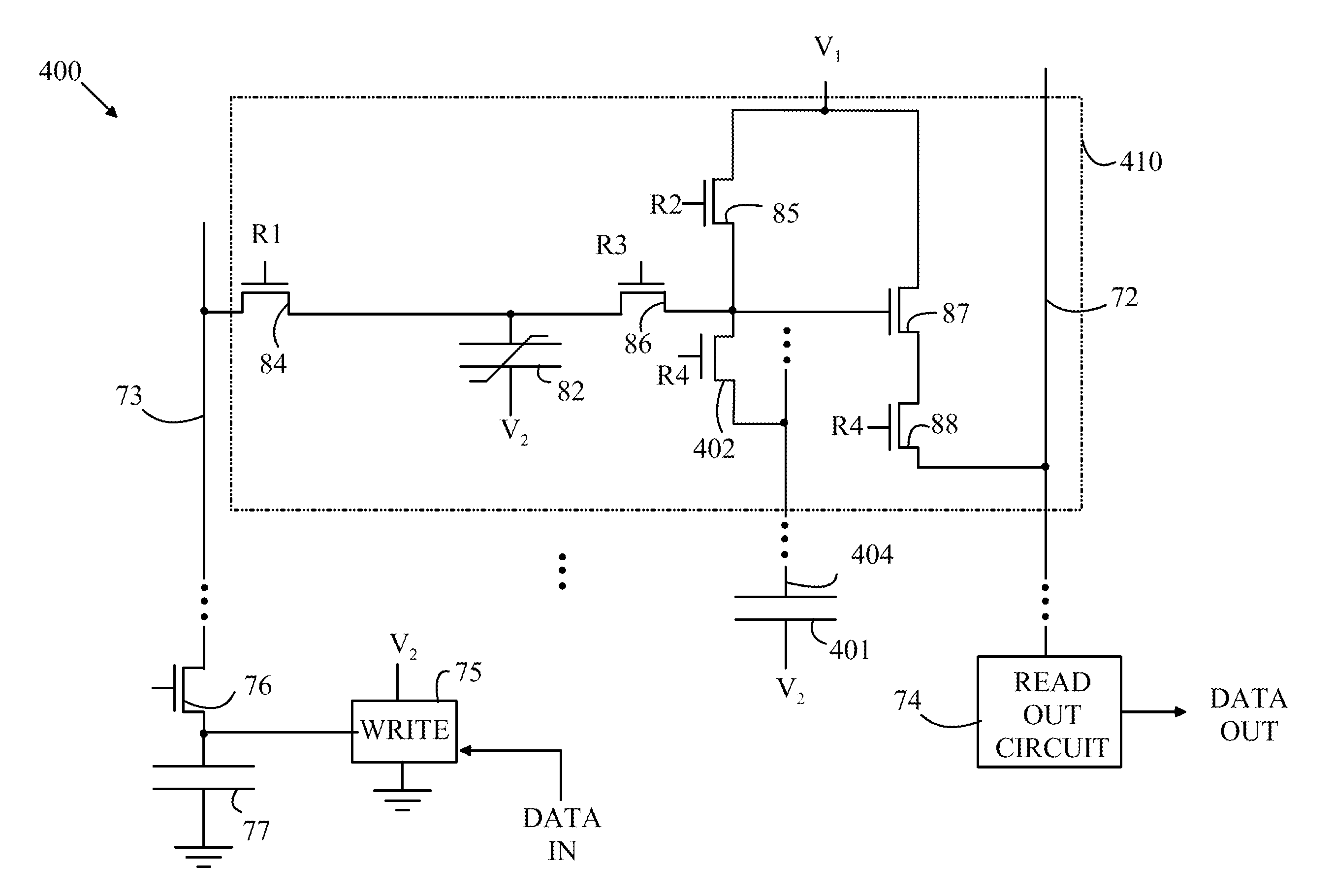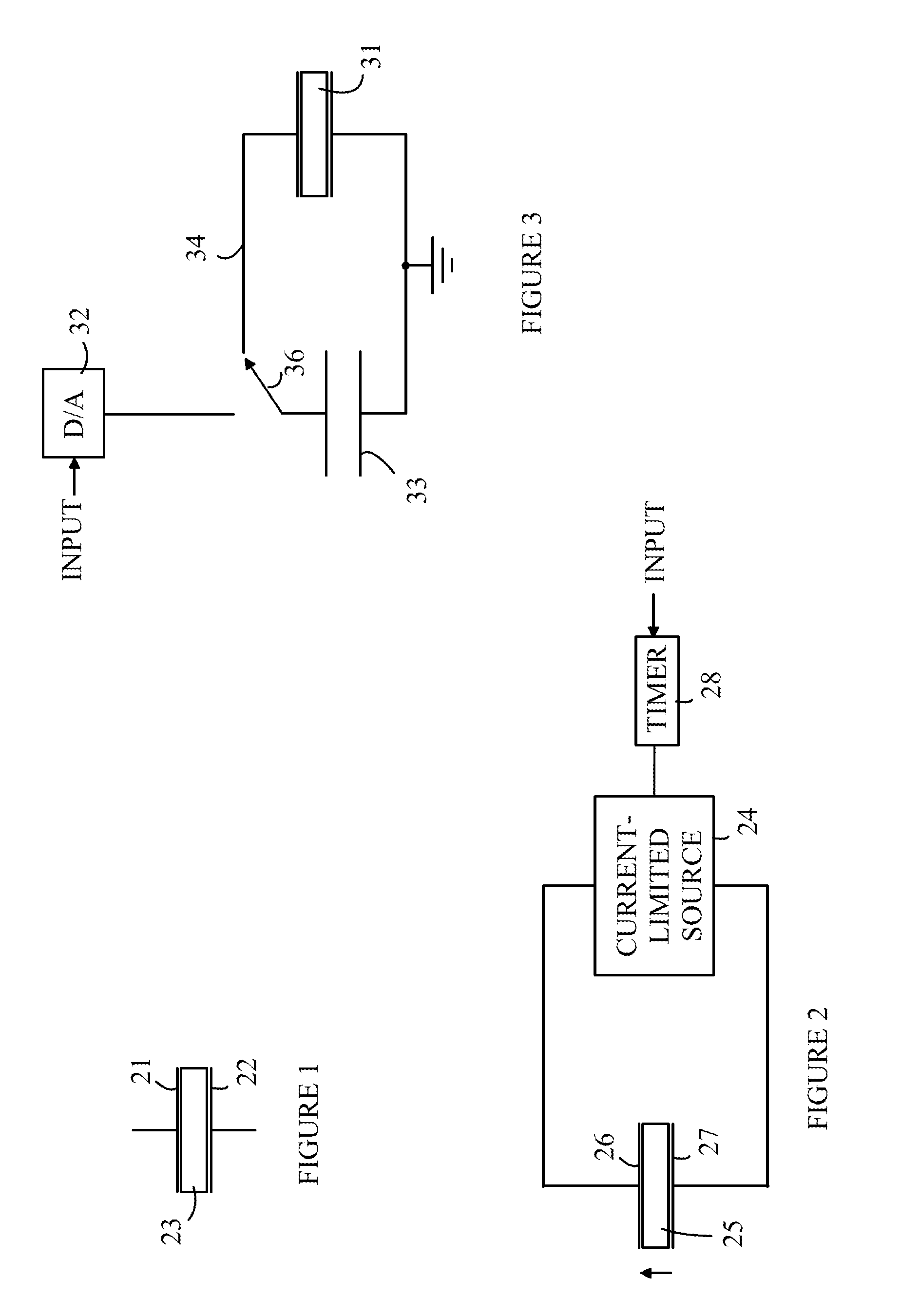Analog memories utilizing ferroelectric capacitors
a technology of ferroelectric capacitors and analog memories, applied in the direction of electric analogue stores, digital storage, instruments, etc., can solve the problems of memory that cannot withstand significant mechanical shocks, requires a fraction of the power of conventional disk drives, and costs such memories
- Summary
- Abstract
- Description
- Claims
- Application Information
AI Technical Summary
Problems solved by technology
Method used
Image
Examples
Embodiment Construction
[0022]Refer now to FIG. 1, which illustrates a typical ferroelectric capacitor. For the purposes of this discussion, a ferroelectric capacitor is defined to be a capacitor having a ferroelectric dielectric material such as lead zirconate titanate (PZT) sandwiched between first and second electrodes in which the dielectric material exhibits a remanent polarization when a potential is applied across the electrodes and then removed. The simplest form of capacitor is a parallel plate capacitor having electrodes 21 and 22 in which a dielectric layer 23 includes a ferroelectric material such as lead zirconate titanate. To simplify the following discussion, a ferroelectric capacitor having a single pair of parallel plates that sandwich the dielectric will be used in the examples. However, other geometries are possible. For example, a capacitor having interdigitated electrodes (interlaced fingers) with a dielectric between each pair of electrodes could also be utilized.
[0023]The dielectric ...
PUM
 Login to View More
Login to View More Abstract
Description
Claims
Application Information
 Login to View More
Login to View More - R&D
- Intellectual Property
- Life Sciences
- Materials
- Tech Scout
- Unparalleled Data Quality
- Higher Quality Content
- 60% Fewer Hallucinations
Browse by: Latest US Patents, China's latest patents, Technical Efficacy Thesaurus, Application Domain, Technology Topic, Popular Technical Reports.
© 2025 PatSnap. All rights reserved.Legal|Privacy policy|Modern Slavery Act Transparency Statement|Sitemap|About US| Contact US: help@patsnap.com



